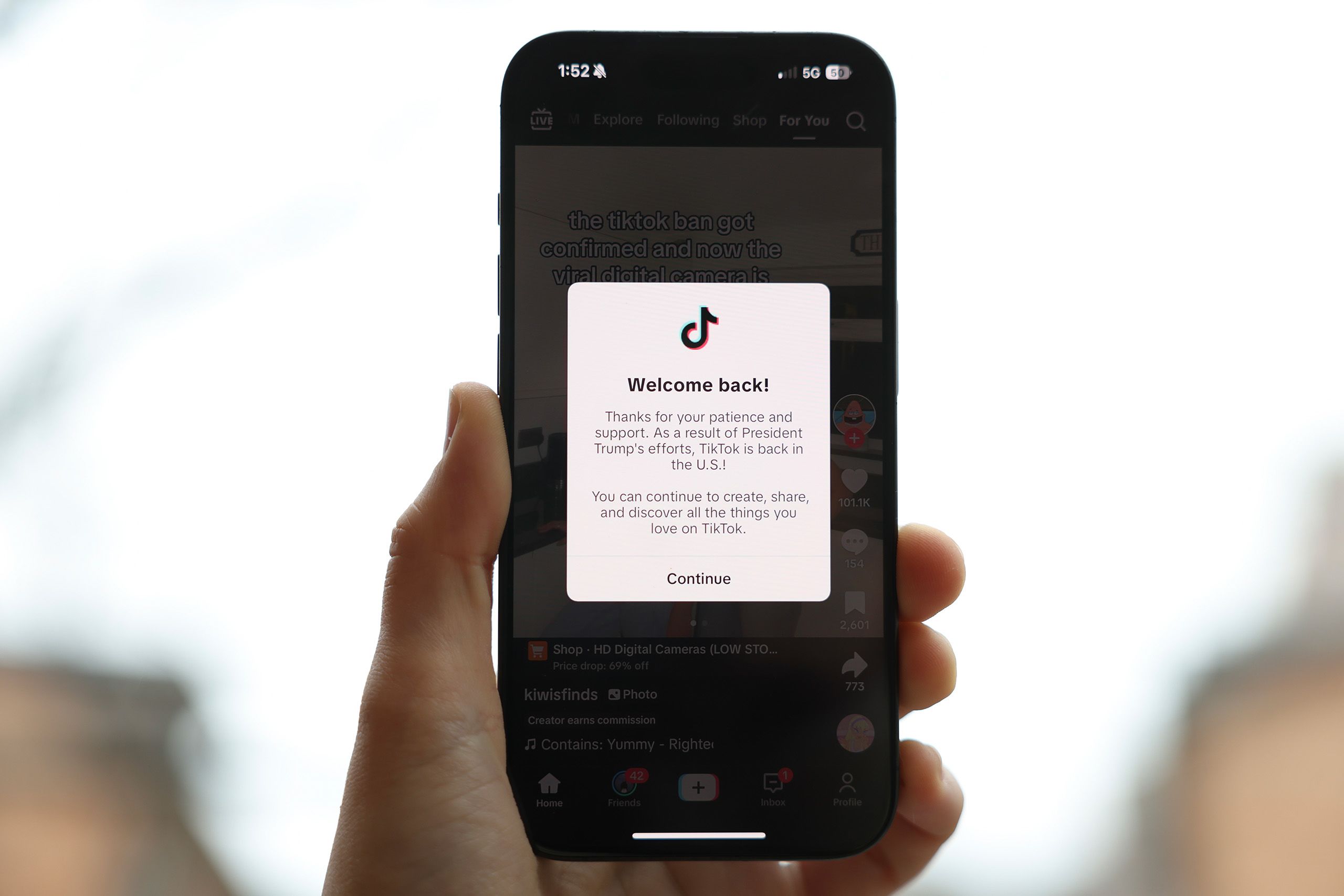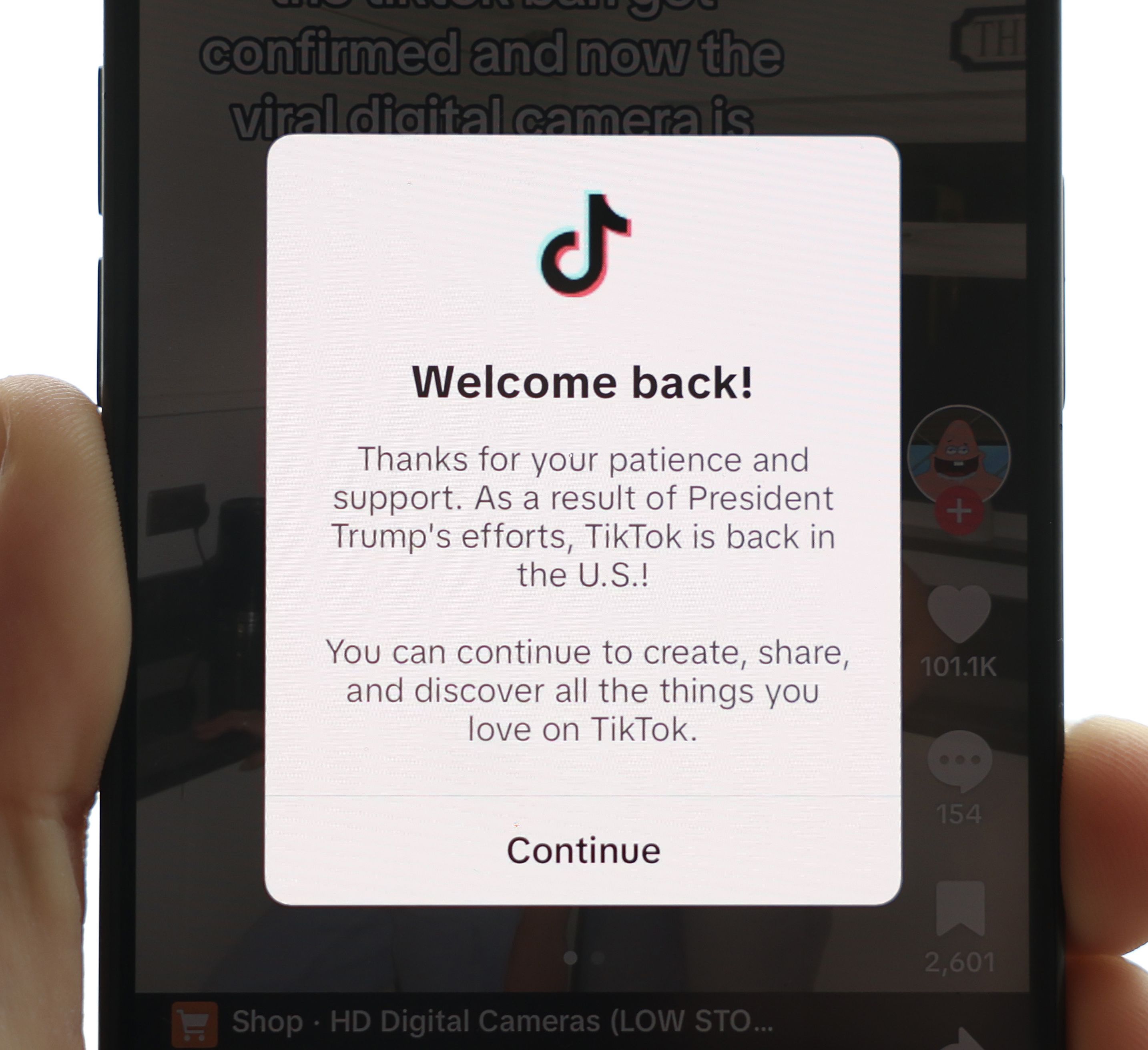TikTok's future still unclear in wake of US ban

TikTok's future still unclear in wake of US ban

A wave of confusion swept over US-based TikTok users this weekend. Upon attempting to access the platform on Sunday, they encountered the notification: “Sorry, TikTok isn’t available right now.” A mere 14 hours later, access to the app was restored with a second message stating that it was back online “thanks to President Trump’s efforts”.
The ban comes after US officials and lawmakers, including President Joe Biden, championed its removal from app stores, citing potential links between TikTok – and parent company ByteDance – and the Chinese government. Contact asked Professor Stan Karanasios to explain the ban, what it means for users in the US and around the world, and what’s next as ban opponent Donald Trump resumes office.
First, here's a refresher on the timeline so far:
- 23 April 2024: Bill to ban TikTok unless sold by China-based ByteDance to an American company passes US Senate.
- 24 April 2024: President Biden signs the bill into law.
- 7 May 2024: TikTok files suit against US federal government arguing the bill violates First Amendment.
- 27 December 2024: Trump announces opposition to the ban, calling on US Supreme Court to halt it until after his inauguration on January 20.
- 17 January 2025: US Supreme Court upholds the ban, TikTok says it will “be forced to go dark” on January 19.
- 18 January 2025 (11pm +5 GMT): TikTok goes dark in America.
- 19 January 2025 (12am +5 GMT): TikTok ban goes into effect.
- 19 January 2025 (10am +5 GMT): Trump announces intention to delay the ban when he resumes office on 20 January.
- 19 January 2025 (1pm +5 GMT): TikTok is restored for some US-based users.
Professor Stan Karanasios
Professor Stan Karanasios
How did it come to this?
The US Supreme Court made a decision last week to uphold a legislated ban on TikTok, which is owned by the Chinese company ByteDance, thereby confirming 19 January as the final day of the app’s legal availability in the country.
Discussions about a ban go back several years and are driven by concerns that the Chinese government could manipulate content and access sensitive user data. As early as December 2019, the Department of Defence identified TikTok as a security risk, prompting the US Army and Navy to ban the app on all government devices. The US Congress passed legislation in March 2024 to ban the social media platform TikTok unless it is sold to a buyer approved by the government.
While this may appear drastic, the US is not the first to ban TikTok. India, previously TikTok’s largest market, blocked the app in 2020, proving such bans are both feasible and enforceable.
The Donald Trump factor
The timing of the decision is particularly interesting and complicated. The ban has taken effect as of 19 January (US time), the last full day of Current President Joe Biden’s term. President Biden did not take steps to intervene to block the ban in his final days in office.
President-elect Donald Trump, who opposes the ban, takes office on 20 January (21 January Australian time). News reports suggest that he intends to issue an executive order to suspend enforcement of a shutdown for 60 to 90 days.
However, according to some experts, President-elect Trump lacks the authority to halt the new law as it is currently written. In order to do so he needs to assure Congress that a suitable party for divestiture has been identified, that progress is being made and that legal agreements are in place to carry out the divestiture effectively. As such, it is unlikely that the issue will go away, potentially becoming a major political quandary for the President as the situation continues to unfold.

A message posted on the TikTok app following its restoration to US app stores. Image: Kayla Bartkowski / Getty Images
A message posted on the TikTok app following its restoration to US app stores. Image: Kayla Bartkowski / Getty Images
The impact for TikTok users in the US – and around the world
There was always some uncertainly around how the ban would work. If fully implemented in future, the TikTok app wouldn't necessarily be removed from devices, nor is it likely that users would ever be punished for accessing it. But there could be broader implications that lead to its deterioration, as US companies could be prohibited from offering services that facilitate its distribution, maintenance or updates.
While some users might find ways to bypass any future restrictions and continue using the app, the disruption that has already been caused may see a reduction in active users, leading to a dwindling user base. This could have a global impact because the effectiveness of such platforms grows with their user base: more users lead to better features, which then attract even more users. In other words, the instability caused by the ban could be successful in pushing users to other platforms – regardless of whether it is fully implemented.
TikTok handled the situation over the weekend strategically by going dark before the imposed ban began and initially appealing to President-elect Trump, then thanking him directly in their reactivation message to users.
An interesting feature of this evolving situation has been the reports suggesting that many TikTok users were migrating to RedNote, another Chinese social media platform, which has reportedly received support from local users for these TikTok ‘refugees’. This was an unexpected development, given that many US TikTok were already users of Instagram, YouTube and other short video platforms.
An unstable future for social media users
In this new era of social media, social media users must rethink their expectations of platform longevity. The discontinuation of long running services over the last decade like Google Groups and IMDb forums, along with the government bans on certain platforms, highlights a broader trend of instability and disruption for users and the fluidity of the digital space.
My research on platform closures reveals that social media community groups struggle to reform after closures. Users need to maintain flexibility in their social media engagements, choosing platforms that facilitate easy migration of content and identity. My research also shows that users of digital platforms experience significant distress and unease when they face the loss of their digital habitats. This was particularly evident in the days leading up to the recent ban.
Enabling easier migration for users in the event of closure could be – paradoxically – in the interests of platforms. While this approach contradicts the common practice of locking in users, it could create long-term credibility and user loyalty.




